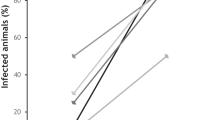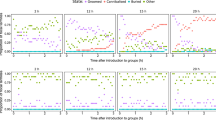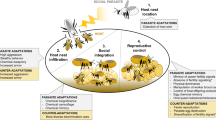Abstract
Although pathogens appear to have exerted significant selective pressure on various aspects of sociality, mechanisms of disease resistance in the social insects are poorly understood. We report here on an immune response to infection by the dampwood termite, Zootermopsis angusticollis. Nymphs immunized with an injection of 7.6×107, 7.6×105, or 7.6×104 cells/ml glutaraldehyde-killed solution of the bacterium Pseudomonas aeruginosa had significantly higher survivorship than controls following a challenge with a lethal concentration of active bacteria. Similarly, nymphs exposed to a 9×10–1 spores/ml suspension of the fungus Metarhizium anisopliae had higher survivorship than controls after a challenge with a lethal concentration of spores. Prior exposure to a pathogen thus conferred upon termites a degree of protection during a subsequent encounter with the same pathogen. This represents the first demonstration of immune function in vivo in a social insect.
Similar content being viewed by others
Author information
Authors and Affiliations
Additional information
Received: 18 May 1999 / Accepted in revised form: 26 August 1999
Rights and permissions
About this article
Cite this article
Rosengaus, R., Traniello, J., Chen, T. et al. Immunity in a Social Insect. Naturwissenschaften 86, 588–591 (1999). https://doi.org/10.1007/s001140050679
Issue Date:
DOI: https://doi.org/10.1007/s001140050679




